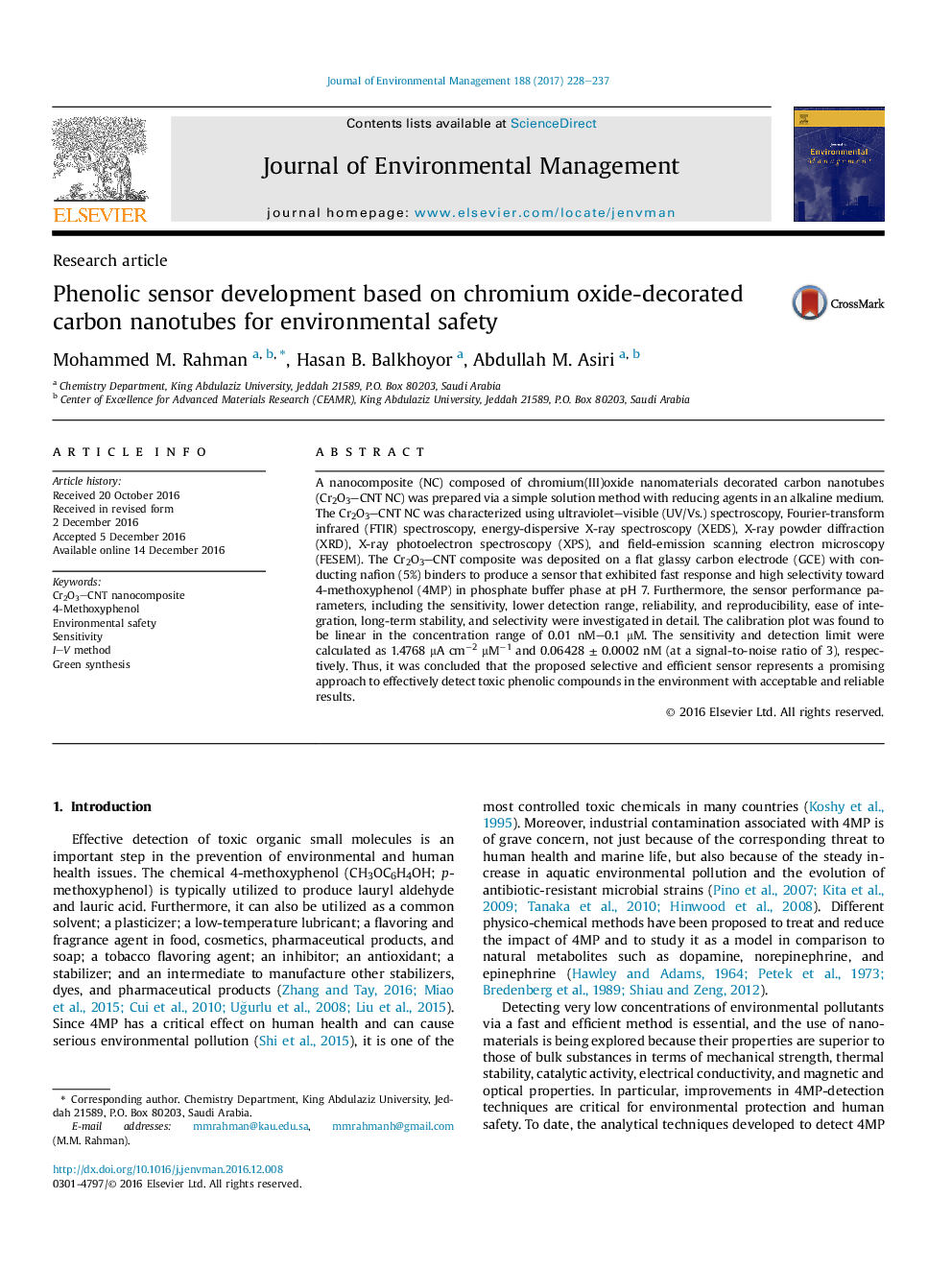| Article ID | Journal | Published Year | Pages | File Type |
|---|---|---|---|---|
| 5117140 | Journal of Environmental Management | 2017 | 10 Pages |
â¢Cr2O3- CNT nanocomposite was prepared by solution method.â¢A fast response towards 4-methoxyphenol was developed.â¢Sensor sensitivity was 1.4768 μA cmâ2 μMâ1.â¢Sensor detection limit was 0.06428 ± 0.0002 nM.â¢Environmental safety.
A nanocomposite (NC) composed of chromium(III)oxide nanomaterials decorated carbon nanotubes (Cr2O3-CNT NC) was prepared via a simple solution method with reducing agents in an alkaline medium. The Cr2O3-CNT NC was characterized using ultraviolet-visible (UV/Vs.) spectroscopy, Fourier-transform infrared (FTIR) spectroscopy, energy-dispersive X-ray spectroscopy (XEDS), X-ray powder diffraction (XRD), X-ray photoelectron spectroscopy (XPS), and field-emission scanning electron microscopy (FESEM). The Cr2O3-CNT composite was deposited on a flat glassy carbon electrode (GCE) with conducting nafion (5%) binders to produce a sensor that exhibited fast response and high selectivity toward 4-methoxyphenol (4MP) in phosphate buffer phase at pH 7. Furthermore, the sensor performance parameters, including the sensitivity, lower detection range, reliability, and reproducibility, ease of integration, long-term stability, and selectivity were investigated in detail. The calibration plot was found to be linear in the concentration range of 0.01 nM-0.1 μM. The sensitivity and detection limit were calculated as 1.4768 μA cmâ2 μMâ1 and 0.06428 ± 0.0002 nM (at a signal-to-noise ratio of 3), respectively. Thus, it was concluded that the proposed selective and efficient sensor represents a promising approach to effectively detect toxic phenolic compounds in the environment with acceptable and reliable results.
Graphical abstractDownload high-res image (339KB)Download full-size image
